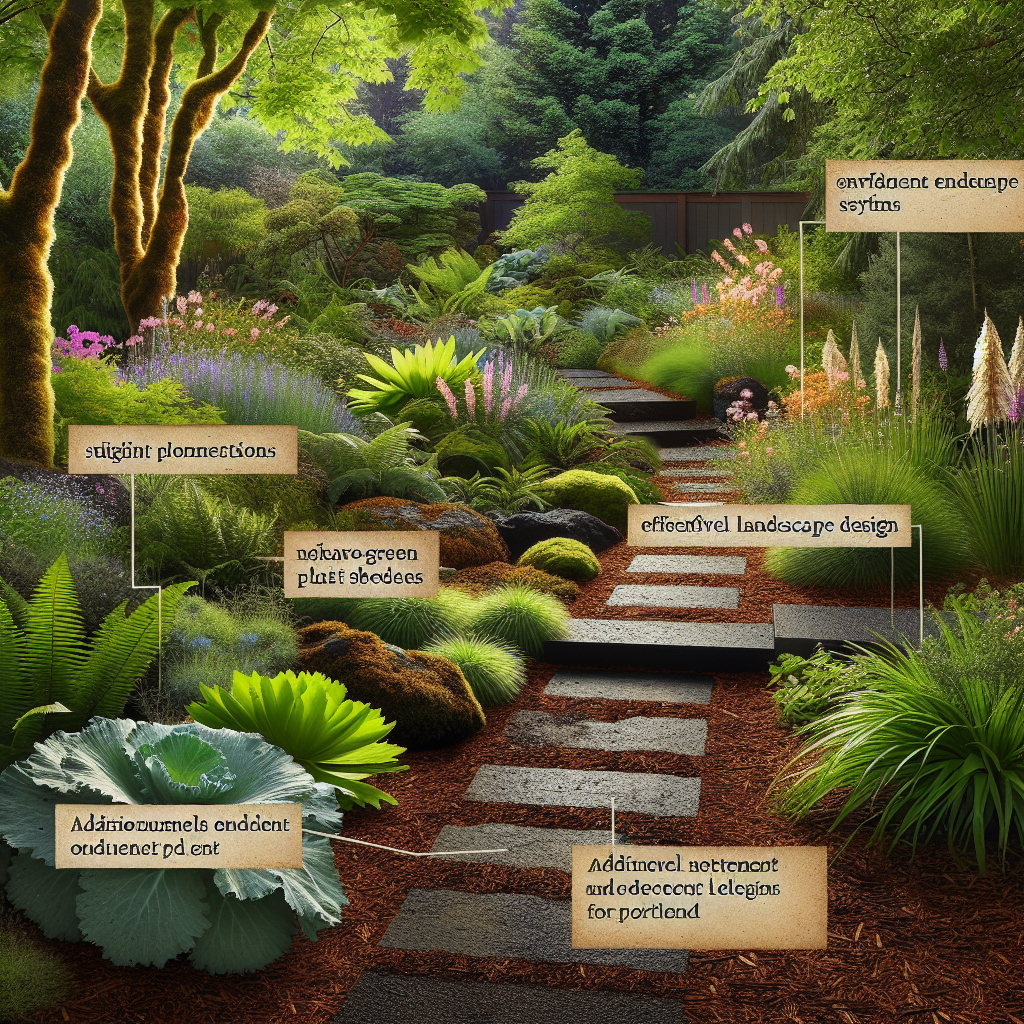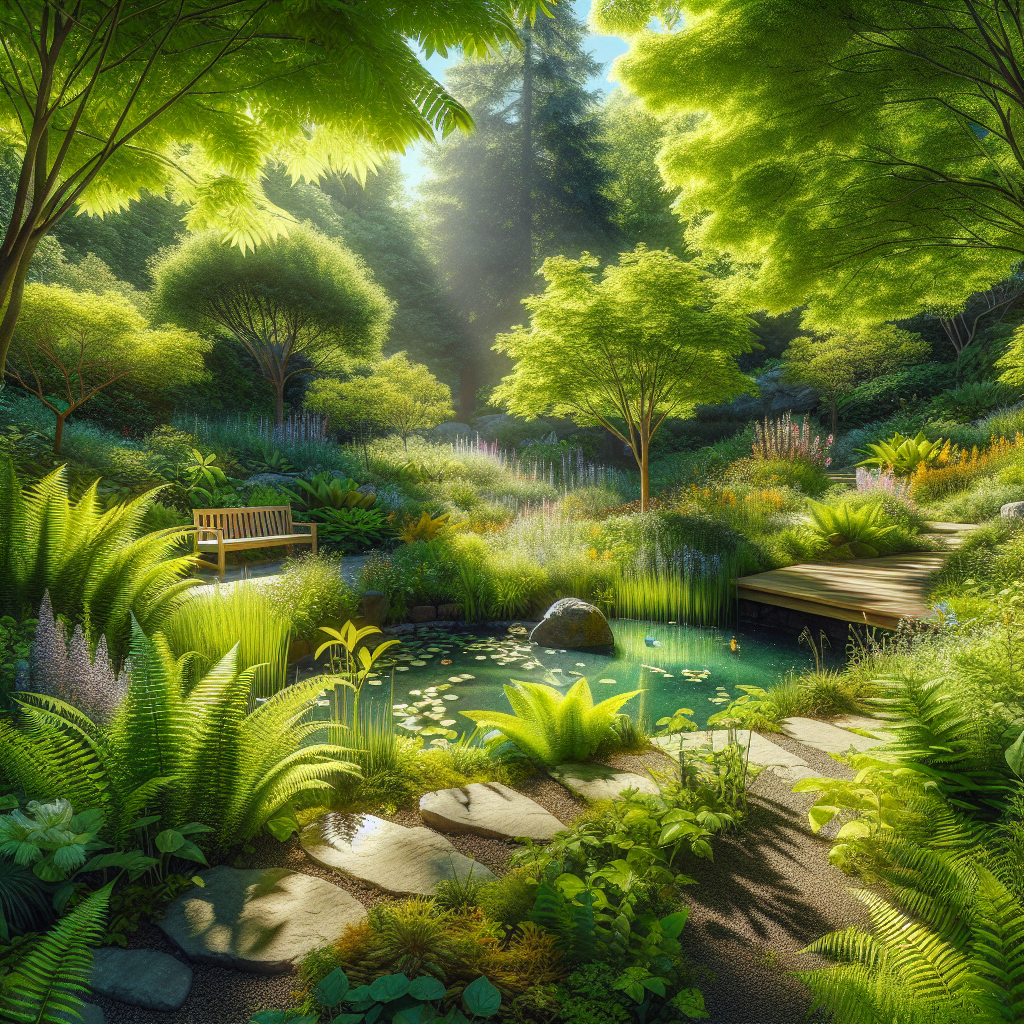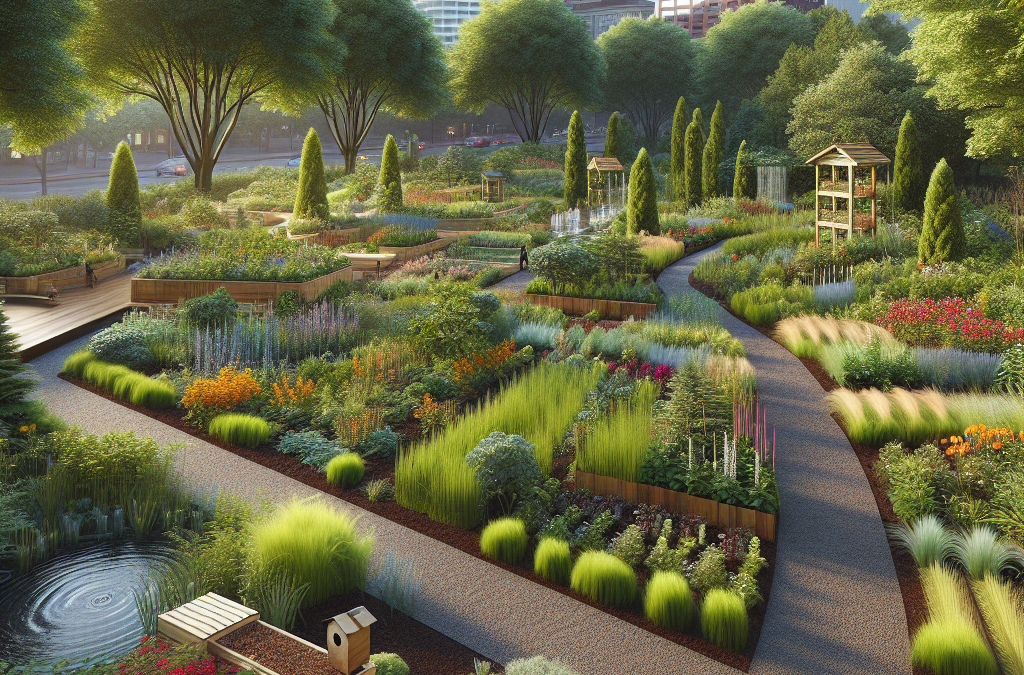In recent years, sustainable landscape design has become a key focus for homeowners and landscapers in Portland. This approach not only enhances the beauty of outdoor spaces but also contributes to the health of our environment. By integrating eco-friendly practices, sustainable landscape design aims to reduce water usage, minimize waste, and create habitats for local wildlife. Portland, known for its lush greenery and commitment to sustainability, is the perfect city to embrace these innovative landscaping ideas.
At the heart of sustainable landscape design is the concept of working with nature rather than against it. This means selecting native plants, using organic materials, and implementing efficient irrigation systems. By doing so, we can create landscapes that are both visually appealing and environmentally responsible. Whether you are looking to revamp your backyard or design a new garden, sustainable practices can transform your space into a thriving, green oasis.
Contact us today to discover how our landscaping services can transform your property! Visit yardservicepdx.com to learn more.
Benefits of Sustainable Landscaping

Adopting sustainable landscaping practices offers a multitude of benefits that extend beyond your own backyard. One of the most significant advantages is the reduction in water consumption. By choosing drought-tolerant plants and installing efficient irrigation systems, you can drastically cut down on water usage, which is crucial in areas like Portland where water conservation is a priority.
Furthermore, sustainable landscaping promotes biodiversity. By incorporating native plants into your design, you create a habitat for local wildlife, including beneficial insects, birds, and pollinators. This not only enhances the ecological balance but also adds a dynamic and vibrant element to your garden.
Another key benefit is the reduction of maintenance costs. Sustainable landscapes are designed to thrive with minimal intervention, which means less time and money spent on fertilizers, pesticides, and extensive lawn care. Additionally, using organic mulch and compost can improve soil health, leading to healthier plants that require less upkeep.
On a broader scale, sustainable landscapes contribute to the overall health of the environment. They help reduce the urban heat island effect by incorporating more green spaces and trees, which provide shade and lower temperatures. Moreover, these practices can improve air quality by absorbing pollutants and producing oxygen.
Overall, embracing sustainable landscaping not only makes your outdoor space more beautiful and functional but also supports environmental conservation and community well-being.
Native Plants for Portland Gardens

Choosing native plants for your Portland garden is a smart and sustainable way to enhance your landscape. Native plants are naturally adapted to the local climate and soil conditions, making them more resilient and easier to maintain. Here are some top native plants to consider for your Portland garden:
- Oregon Grape (Mahonia aquifolium): This evergreen shrub is not only the state flower of Oregon but also a hardy plant that thrives in both sun and shade. Its yellow flowers and blue berries attract pollinators and birds, adding biodiversity to your garden.
- Red Flowering Currant (Ribes sanguineum): Known for its striking clusters of pink to red flowers, this deciduous shrub is perfect for adding a splash of color. It blooms in early spring, providing an essential nectar source for hummingbirds and bees.
- Western Sword Fern (Polystichum munitum): Ideal for shady areas, this fern is a staple in Portland gardens. Its lush, green fronds create a beautiful contrast with other plants and require minimal care once established.
- Kinnikinnick (Arctostaphylos uva-ursi): This low-growing ground cover is excellent for erosion control and thrives in well-drained soil. Its small white or pink flowers are followed by red berries, which are a food source for various wildlife.
- Douglas Aster (Symphyotrichum subspicatum): Blooming in late summer to fall, this perennial offers vibrant purple flowers that attract butterflies and other pollinators. It grows well in both full sun and partial shade.
Incorporating these native plants into your garden not only reduces the need for water and chemical inputs but also supports local ecosystems. Their natural beauty and adaptability make them a perfect choice for any Portland garden looking to go green and sustainable.
Water Conservation Techniques

Implementing water conservation techniques is essential for creating a sustainable landscape in Portland. With its seasonal rainfall patterns, managing water efficiently can help maintain a healthy garden while reducing environmental impact. Here are some effective water conservation techniques to consider:
- Drip Irrigation: This system delivers water directly to the roots of plants, minimizing evaporation and runoff. Drip irrigation is highly efficient and can be customized to meet the specific needs of different plants in your garden.
- Mulching: Applying a layer of organic mulch around plants helps retain soil moisture, suppress weeds, and regulate soil temperature. Mulch also improves soil health as it decomposes, providing essential nutrients to plants.
- Rainwater Harvesting: Collecting rainwater from rooftops and storing it in barrels or cisterns can provide an additional water source for your garden. This practice not only conserves water but also reduces stormwater runoff and erosion.
- Soil Improvement: Enhancing soil structure with compost and organic matter increases its water-holding capacity. Healthy soil retains moisture better and provides a more stable environment for plant roots.
- Smart Plant Selection: Choose drought-tolerant and native plants that require less water. Group plants with similar water needs together to create hydrozones, making it easier to irrigate efficiently.
- Efficient Watering Practices: Water your garden during the early morning or late evening to reduce evaporation. Use a soaker hose or watering can to target the base of plants rather than using overhead sprinklers.
By incorporating these water conservation techniques into your landscape design, you can create a lush, thriving garden that is both environmentally friendly and cost-effective. Small changes in how you manage water can lead to significant benefits for your garden and the planet.
Eco-Friendly Hardscaping Ideas

Integrating eco-friendly hardscaping ideas into your landscape design is a fantastic way to enhance the beauty and functionality of your outdoor space while promoting sustainability. Hardscaping involves the use of non-plant elements, such as pathways, patios, and retaining walls, which can be designed to minimize environmental impact. Here are some innovative eco-friendly hardscaping ideas to consider:
- Permeable Pavers: Instead of traditional concrete or asphalt, use permeable pavers that allow water to infiltrate the ground. This reduces stormwater runoff and helps recharge groundwater supplies. Permeable pavers are available in various materials, including porous concrete, brick, and natural stone.
- Recycled Materials: Incorporate recycled materials into your hardscape design. Recycled concrete, reclaimed wood, and repurposed bricks are excellent choices that reduce waste and lower the demand for new resources. These materials can add unique character and a rustic charm to your garden.
- Natural Stone: Opt for locally sourced natural stone for pathways, patios, and retaining walls. Natural stone is durable, requires minimal maintenance, and blends seamlessly with the surrounding environment. Using local materials also reduces the carbon footprint associated with transportation.
- Green Walls and Roofs: Install green walls or living roofs on structures within your landscape. These vertical gardens not only provide insulation and reduce energy consumption but also improve air quality and create habitats for wildlife.
- Solar Lighting: Use solar-powered lights to illuminate walkways, patios, and other outdoor areas. Solar lighting is energy-efficient, reduces electricity costs, and enhances the ambiance of your garden without relying on fossil fuels.
- Rain Gardens: Create rain gardens to capture and filter stormwater runoff. These landscaped areas are designed with native plants that thrive in wet conditions, helping to reduce erosion and improve water quality.
By incorporating these eco-friendly hardscaping ideas into your landscape design, you can create an attractive and sustainable outdoor living space. Thoughtful hardscaping not only enhances the aesthetic appeal of your garden but also contributes to a healthier environment.
Incorporating Wildlife Habitats
Creating a landscape that supports local wildlife can transform your garden into a vibrant and dynamic ecosystem. Incorporating wildlife habitats not only enhances the natural beauty of your outdoor space but also contributes to biodiversity and environmental health. Here are some effective ways to make your garden a haven for wildlife:
- Native Plants: Choose native plants that provide food and shelter for local wildlife. Native flora is well-adapted to the region’s climate and soil conditions, making them low-maintenance and sustainable. They attract pollinators like bees, butterflies, and hummingbirds, ensuring a thriving garden.
- Bird Feeders and Houses: Install bird feeders and birdhouses to attract a variety of bird species. Bird feeders filled with seeds or nectar can draw in songbirds, while birdhouses offer safe nesting sites. Position these structures away from high-traffic areas to provide a tranquil environment.
- Water Features: Incorporate water features such as birdbaths, ponds, or small fountains. These water sources provide drinking and bathing spots for birds, insects, and other wildlife. Ensure that the water is clean and regularly maintained to prevent the spread of disease.
- Butterfly Gardens: Plant a variety of nectar-rich flowers to create a butterfly garden. Include host plants for butterfly larvae to encourage breeding. Milkweed, for example, is essential for monarch butterflies.
- Wildlife Corridors: Design your landscape to include wildlife corridors, which are continuous pathways that allow animals to move freely and safely. These corridors can be created using hedgerows, native grasses, and other vegetation.
- Composting Areas: Establish composting areas that provide food and habitat for beneficial insects like beetles and earthworms. Composting not only enriches the soil but also supports a healthy ecosystem by recycling organic waste.
- Brush Piles and Log Shelters: Create brush piles and log shelters to offer refuge for small mammals, reptiles, and amphibians. These structures mimic natural habitats and provide essential cover and nesting sites.
By incorporating these elements into your landscape design, you can create a welcoming environment for wildlife, enriching your garden with the sights and sounds of nature. Contact us today to discover how our landscaping services can transform your property!

